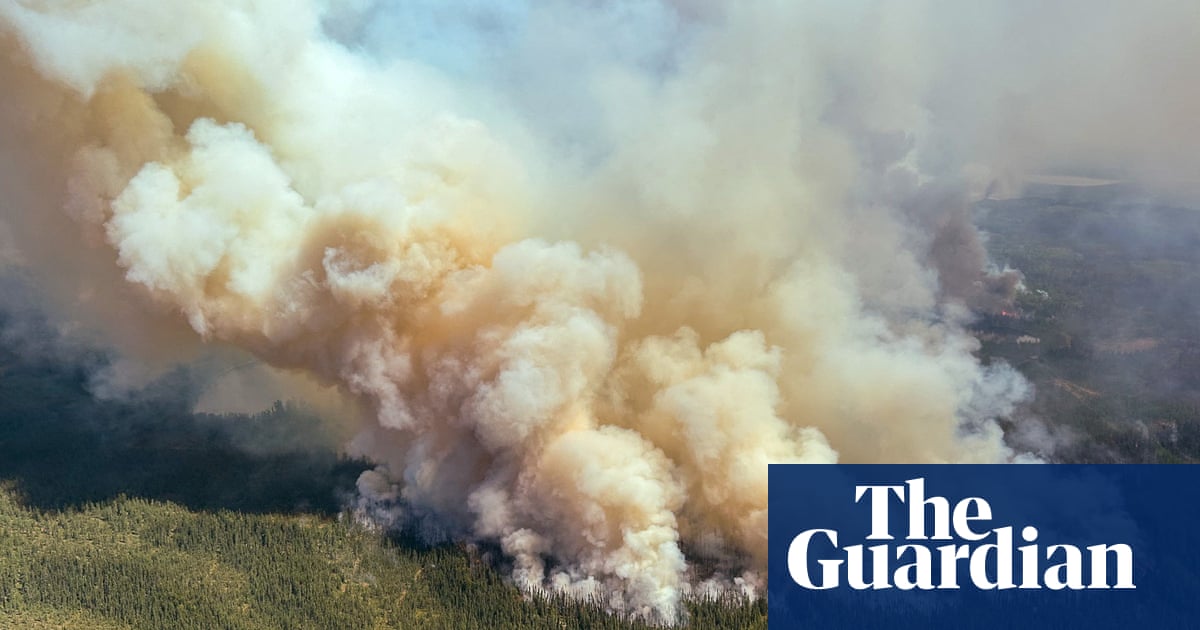Enormous early-seasonwildfireshave erupted across the prairie provinces ofCanadathis week, taxing local emergency response and threatening a long stretch of dangerous air quality across eastern North America.
The country’s largest fires – the Bird River fire and the Border fire – remain completely uncontainedin northern Manitoba. In Manitoba alone, wildfires have burned about 200,000 hectares already this year – already about three times the recent full-year average for the province.
More than 17,000 people are in the process of being airlifted out of wildfire zones by the Canadian military, some of which now have no safe overland roads connecting them to the rest of the country. Wab Kinew, the Manitoba premier,declareda province-wide state of emergency on Wednesday, and Saskatchewan’s premier, Scott Moe,declared the sameon Thursday.
“This is the largest evacuation Manitoba will have seen in most people’s living memory,” Kinew said at a press conference. “For the first time, it’s not a fire in one region, we have fires in every region. That is a sign of a changing climate that we are going to have to adapt to.”
First Nations in Saskatchewanhave been particularly affectedby the fires this week, with some entire communities evacuated and occasionally trapped by road closures due to unsafe conditions.Drone footagecirculated by CBC showed towering flames and burned homes and cabins in northern Saskatchewan on Wednesday. Wildfires arealso burning in Alberta’s oil countryand have disrupted production and forced evacuations there this week.
Satellite images captured over the past two weeks showed extreme fire behavior,including pyrocumulus clouds, that until recent years has been a rare occurrence in northern Canada – especially in the early days of the annual fire season. These clouds signify an especially hot and intense fire, and can help transport smoke high into the atmosphere where it can then travel long distances.
In advance of the wave of wildfire smoke, the US National Weather Service has issued air quality alerts for parts of Minnesota between Lake Superior and the Canadian border.
Weather forecasts show smoke continuing to billow across the border into the United States over the coming days, which could notably worsen air quality further downstream in cities such as Chicago, Detroit and Washington DC. Air quality in the worst-affected cities across the midwest and mid-Atlantic regions could reach the “red” category, signifying an air quality index exceeding 150 and unhealthy conditions for all groups.
A prolonged period of unusually warm and dry conditions helped to intensify this week’s fires, continuing a trend worsened by climate change. The fire seasons of 2023 and 2024 were the worst two years in Canadian history. In June 2023, wildfire smoke transported southward from Canada turned skies orange over New York City, briefly making its airthe most unhealthy of any city in the world.
The most recent assessments by Natural Resources Canada show that fire conditions arecurrently maxing out the scaleacross much of the regions where wildfires are now burning out of control. Government forecastersalso predictthat the fire seasons in the provinces of Manitoba, Saskatchewan, Alberta and British Columbia will all continue to be “well above average” for the remainder of the spring and summer.
The health effects of wildfire smoke is an increasingly urgent area of medical research. Astudy published this weekfound for the first time that exposure to the fine soot particles of wildfire smoke can have adverse effects on the heart and lungs for months after the smoke clears. Otherrecent studieshave found that wildfire smoke worsens the risk of stroke, negatively impacts brain function, and can even interfere with fertility treatments.
The worrying truth emerging from these studies is that there appears to be no safe level ofexposure to wildfire smoke, which can be up to 10 times more toxic than the soot and smog of typical urban air pollution.New datasuggest that thousands of people now die each year from wildfire smoke in the US, creating billions of dollars of additional costs to the economy.
Expertsrecommendwearing a fitted N95 or similar mask if you are exposed to wildfire smoke outdoors, and using a portableair filtration systemif you are indoors.
